Con la creciente popularidad de las tablas de remo en todo el mundo, algunas personas quieren unirse pero aún les preocupa que puedan sufrir algunas lesiones . durante la experiencia acuática. A pesar de las preocupaciones, lesiones en tablas de remo Solo representaron el 1% de las 326 lesiones sufridas por surfistas. Sin embargo, pueden ocurrir algunos riesgos potenciales que los practicantes de paddle surf deben conocer. A continuación, se enumeran algunos de ellos:
- Lesiones en la cabeza
- Lesiones de espalda
- Lesiones del tronco
- Lesiones en el hombro y la parte superior del brazo
- Lesiones en la espalda baja
- Lesiones del cuello
- Lesiones por esguince de tobillo
- Lesiones en los pies
- Lesiones de muñeca
Las 6 lesiones más comunes en las tablas de surf de remo
Un estudio demostró que la zona corporal lesionada con mayor frecuencia es el hombro/brazo superior (32,9%), seguida de la zona lumbar (14,3%) y el codo/antebrazo (11,8%). Mientras tanto, el tipo de lesión más común es el músculo/tendón (50,4%), seguido de la articulación/ligamento (22,6%) y la piel (14,2%). A continuación, se muestran las 6 lesiones más frecuentes lesiones en tablas de remo Que deberías saber.
1. Lesiones en el hombro y la parte superior del brazo
El paddle surf es una excelente manera de divertirse en el agua, pero a veces algunos lesiones en tablas de remo Podría suceder y provocarle dolor en los hombros y la parte superior del brazo.
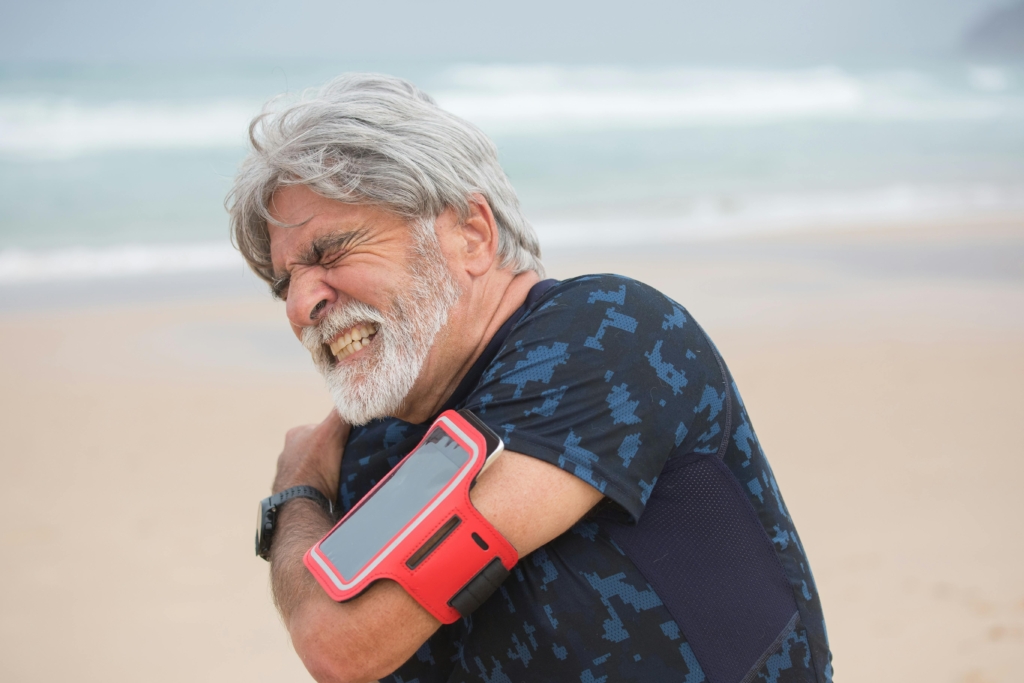
He aquí el por qué:
- Al remar, se realiza un movimiento de torsión sobre los hombros. Con el tiempo, esto puede provocar rigidez en los músculos de los hombros.
- Luego, esos músculos fuertes pueden sacar el hueso del brazo de su posición normal y comprimir el espacio en la articulación del hombro.
- Esto ejerce presión sobre los músculos de los hombros, especialmente los que ayudan a las manos a sostenerlos. Esta presión es la que causa el dolor.
Algunas señales a tener en cuenta para detectar lesiones en el hombro y la parte superior del brazo al practicar surf:
- De repente te duelen los hombros cuando levantas los brazos por encima de la cabeza.
- Dolor al empujar el brazo hacia abajo, al regresar a la plancha.
2. Lesiones en la espalda baja
La tabla de remo nos permite disfrutar del agua, pero la flexión repetida puede tensar la zona lumbar. A continuación, se detalla la mecánica que se esconde tras esta posible lesión:
- Dar un paso hacia adelante con cada brazada siempre tensa la columna lumbar, una zona que no está diseñada para estar excesivamente doblada.
- Inclinarse hacia adelante todo el tiempo puede alterar los sistemas de la zona lumbar, lo que incluye rigidez muscular o irritabilidad. Pueden producirse calambres cuando los músculos se estiran más allá de su rango normal. La flexión excesiva puede comprometer la curva natural (lordosis), lo que provoca dolor e inestabilidad.
- En casos graves, un nervio tenso en la columna vertebral o una hernia de disco pueden comprimir los nervios de la parte inferior de la pierna, provocando un dolor agudo y punzante que se irradia hacia la pierna, así como malestar en la columna vertebral.
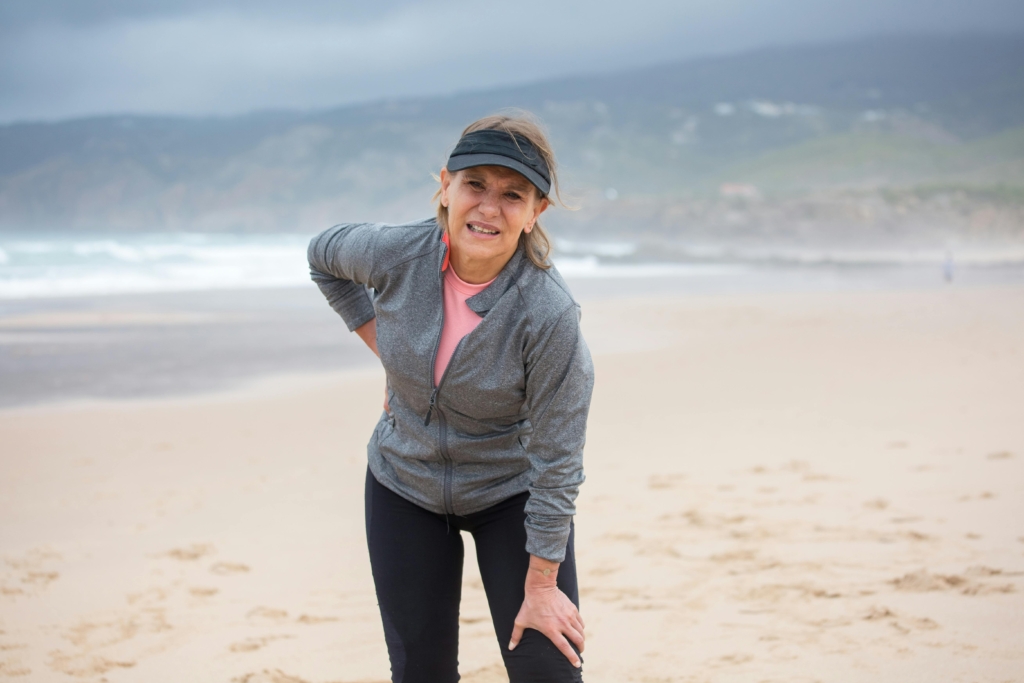
Algunos síntomas de lesiones en la espalda baja que debes tener en cuenta son:
- Dolor de espalda en general, especialmente después de remar.
- Activo con dolor punzante leve (indicando posible afectación nerviosa).
3. Lesiones en el cuello
El cuello de surfista es uno de los más comunes. lesiones en tablas de remo que los surfistas suelen experimentar. No es muy grave, pero puede resultar incómodo y mantenerte alejado de las olas durante unas semanas. Veamos por qué ocurre esto.
- Esto sucede porque remar ejerce mucha presión sobre los músculos del cuello, especialmente en la espalda. Muchos músculos están rígidos y doloridos por mantener la cabeza erguida durante tanto tiempo.
- Entre los huesos del cuello hay cojines. Caminar estimula mucho el cuello y puede provocar dolor muscular e incluso rigidez con el tiempo.
- Los músculos del cuello, como los músculos y los tendones, pueden ponerse nerviosos. El esternocleidomastoideo (ECM), el músculo grande del cuello que hace girar la cabeza, también suele estar rígido y dolorido.
- El exceso de movimiento también puede provocar fracturas óseas en los huesos del cuello. Estas lesiones pueden aplastar los músculos y provocar mucho dolor, dolores de cabeza, debilidad y rigidez.
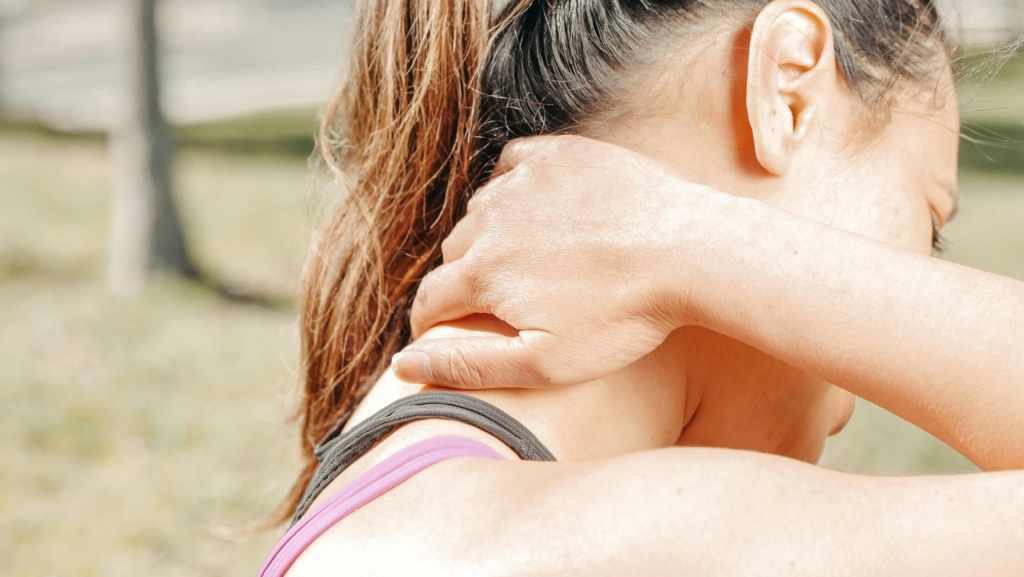
Los signos de una lesión en el cuello incluyen advertencias a las que hay que prestar atención:
- Brazos, hombros, parte superior de los brazos (tríceps) y espalda.
- Dolor de cabeza.
- Siente debilidad muscular o fatiga.
- Me siento mal del estómago.
- Pérdida de sensibilidad en ciertas zonas.
- Dificultad para girar la cabeza o rigidez en el cuello.
- Dolor o ligereza.
4. Lesiones por esguince de tobillo
Los esguinces de tobillo son comunes lesiones en tablas de remo Para los surfistas que calculan mal un paso mientras llevan su bote. Aquí hay algo de información y el mecanismo que debes conocer:
- Un esguince de tobillo ocurre cuando el tobillo se tuerce hacia afuera, estirando o desgarrando las bandas que mantienen unidos los huesos del tobillo.
- Esto suele ocurrir hacia el final del día cuando estás agotado o pensando en los rápidos en lugar de en el lugar donde estás pisando.
Cuando tiene estos síntomas, es posible que tenga una lesión por esguince de tobillo: un esguince de tobillo estará hinchado y amoratado en la parte exterior y dolerá mucho más al caminar que al mirarlo.
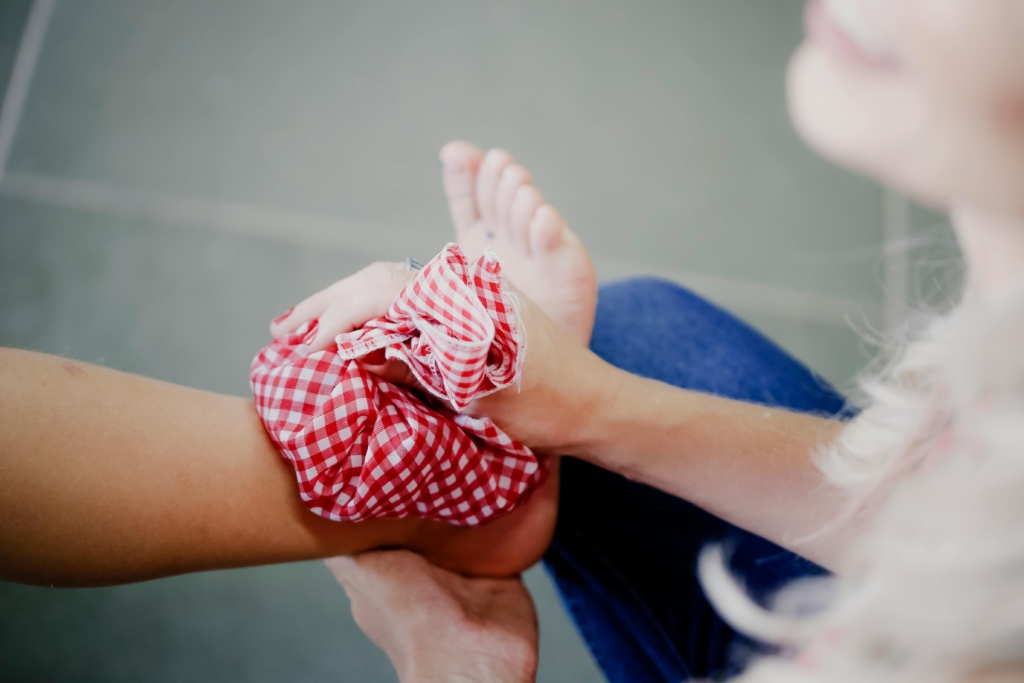
5. Lesiones en los pies
La diversión con el paddle surf puede encontrarse con un enemigo sorprendente: ¡el dolor de pies! Veamos las razones de las lesiones en los pies al hacer surf y algunos síntomas que quizás no conozcas.
- Algunos remadores novatos a menudo aprietan los dedos de los pies para sentirse seguros, pero esto tensa los músculos del pie y corta el flujo sanguíneo, lo que causa dolor, entumecimiento o calambres.
- Los principiantes aún no han encontrado el equilibrio, por lo que dependen más de la tensión del pie para mantenerse erguidos, lo que empeora el problema. Recuerda que agarrar no te ayuda a mantener el equilibrio, la clave es relajar los pies y dejar que hagan pequeños ajustes.
- Caminar sobre superficies irregulares sin el calzado adecuado también puede contribuir al dolor de pies incluso antes de tocar el agua.
Algunos síntomas que pueden experimentar los practicantes de paddle surf cuando sufren lesiones en los pies:
- Dolor que varía desde una leve molestia hasta dolores agudos.
- Pérdida de sensibilidad en los pies.
- La contracción repentina e involuntaria de los músculos puede provocar calambres.
6. Lesiones en la muñeca
Si sientes dolor en las muñecas después de hacer surf, podría deberse a que tus muñecas están desalineadas. A continuación, te explicamos en profundidad cómo una mala alineación puede provocar lesiones y las señales de advertencia a las que debes prestar atención:
- Si tus muñecas no están en la posición correcta mientras corres, se ejerce una presión adicional sobre los músculos conectados a tus músculos y huesos.
- Esta presión repetitiva irrita los músculos y causa inflamación.
- La inflamación es la forma que tiene el cuerpo de proteger el área lesionada, pero también puede causar inflamación y bloquear los dedos para que no puedan volver a mover la boca.
Preste mucha atención a estos síntomas, especialmente si aparecen después de remar:
- Dolor en las muñecas y dedos al correr.
- El área alrededor de los dedos puede estar hinchada e inflamada.
- Correr o cualquier actividad que implique el movimiento de los dedos puede ser muy doloroso.
- Si no se tratan, el dolor y la hinchazón pueden empeorar con el tiempo, restringiendo la movilidad de los dedos y arruinando potencialmente su próxima compra de calzado.
Estiramientos efectivos para prevenir lesiones en la tabla de remo
Para garantizar una experiencia segura con el paddle surf, eche un vistazo a este ejercicio, que le ayudará a prevenir lesiones en tablas de remo y acelerar la recuperación:
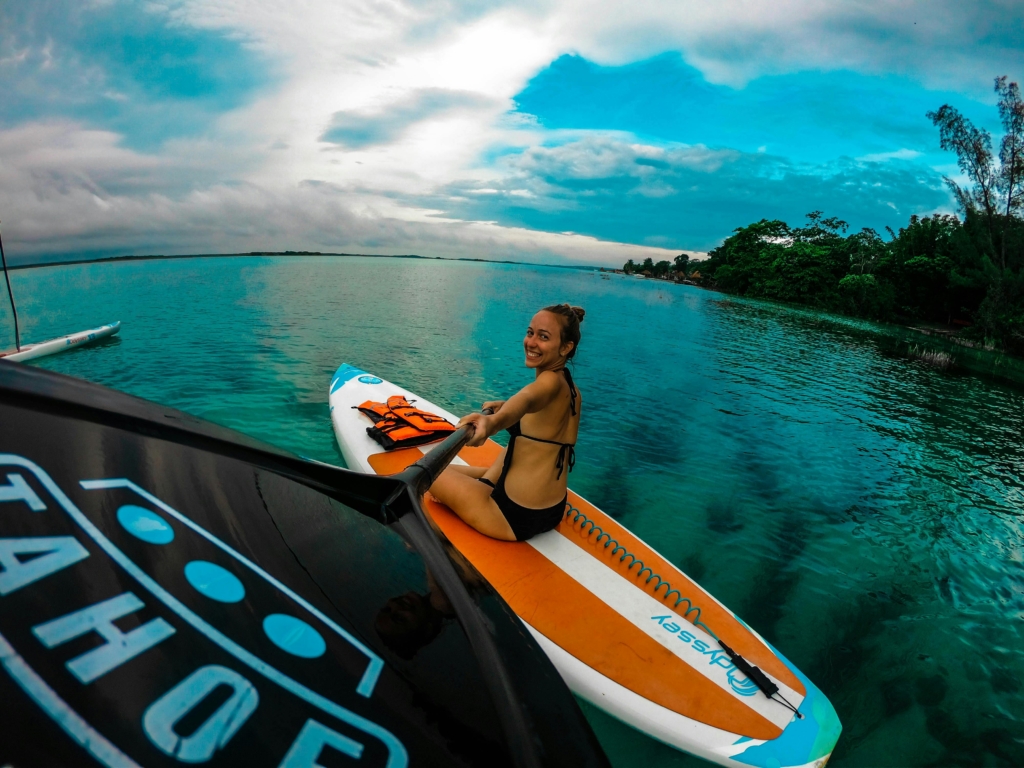
1. Flexiones laterales
- Paso 1: Ponte de pie con los pies separados al ancho de los hombros.
- Paso 2: Imagínate sosteniendo un remo sobre tu cabeza, con los brazos estirados hacia arriba y abiertos.
- Paso 3: Transfiere el peso hacia tu pie izquierdo e inclínate hacia un lado, elevando más el brazo derecho mientras cuentas hasta 3.
- Paso 4: Regrese al centro con el peso distribuido uniformemente.
- Paso 5: Repita los pasos 3 y 4, inclinándose hacia el lado derecho con el brazo izquierdo extendido hacia arriba, durante 3 segundos.
- Paso 6: Haz 5 inclinaciones de cada lado para un total de 10 repeticiones.
2. Uso del hilo dental en los hombros
- Paso 1: Con las piernas a la altura de las caderas, da un paso adelante con zapatos de modelo y los brazos más anchos que el ancho de los hombros para facilitar el movimiento.
- Paso 2: Extiende los brazos hacia adelante y mueve lentamente el zapato sobre tu cabeza, estirándote hacia atrás para tocar tu espalda (o hasta donde te resulte cómodo).
- Paso 3 : Mantenga los hombros relajados y baje con cuidado los zapatos hasta tocar su estómago.
- Paso 4: Repita 10 veces, concentrándose en movimientos lentos y controlados.
3. Estiramiento en forma de cuatro
- Paso 1: Comience de pie, con las piernas separadas al ancho de los hombros.
- Paso 2: Cruza el tobillo derecho sobre el muslo izquierdo, justo por encima de la rodilla. Esto crea un patrón de “cuatro”. Empuja las caderas ligeramente hacia atrás y dobla la rodilla izquierda hasta que forme un ángulo de 90 grados. Gira el pecho hacia adelante mientras sientes que el brazo derecho se extiende suavemente.
- Paso 3: Mantén el centro del cuerpo contraído y la espalda recta. Flexiona ligeramente las rodillas, luego levanta las caderas y estira la pierna izquierda lo más que puedas. Deberías sentir que la pierna derecha se extiende aún más.
- Paso 4: Repita este movimiento 10 veces. Concéntrese en un movimiento suave y controlado mientras dobla y estira la rodilla izquierda.
- Paso 5: Suelte la cuarta foto y retire la pierna. Del otro lado, cruce el tobillo izquierdo sobre el muslo derecho y repita los pasos 2 a 4.
4. Postura de cara de vaca de pie
- Paso 1: Manténgase erguido con zapatos de fantasía colocados directamente detrás de usted.
- Paso 2: Sujete la parte superior de la pretina y lleve la mano derecha al hombro. Coloque el mango de la pala plano sobre la columna vertebral. Gire el talón de la pierna izquierda y estírese detrás de la espalda hasta que se vuelva espontáneo y atraviese la pierna.
- Paso 3: Contraiga el centro del cuerpo, póngase de pie y relaje los hombros.
- Paso 4: Visualiza el lento tira y afloja. Levanta el brazo derecho durante 3 segundos, luego gira y bájalo con el brazo izquierdo durante 3 segundos. Mantén un movimiento constante de ida y vuelta.
- Paso 5: Tire hacia atrás durante 30 segundos, luego suelte el agarre, cambie la posición de las manos y repita durante otros 30 segundos del otro lado.
5. Giros de pie
- Paso 1: De pie, con los hombros extendidos y las rodillas ligeramente flexionadas, sostenga el pie ilustrado detrás de la cabeza y apóyelo suavemente sobre el hombro. Relaje los hombros y los codos.
- Paso 2: Gira lentamente el torso hacia la izquierda, estirándote lo más que puedas y manteniéndolo así durante un momento.
- Paso 3: Regresa al centro y repite la respiración del lado derecho, manteniendo la respiración hasta que hagas una pausa. Relaja las rodillas y las caderas durante todo el proceso.
- Paso 4: Haz 10 repeticiones, manteniendo las caderas y la parte superior del cuerpo paralelas.
- Paso 5: Completa otros 10 giros, concentrándote en mantener las caderas tensas y aislar la parte superior del cuerpo.
6. Giro de la espalda baja
- Paso 1: Mantente cómodo.
- Paso 2: Extiende una pierna hacia adelante.
- Paso 3: Dobla la otra pierna y aterriza plano sobre la pierna extendida.
- Paso 4: Extiende tu cuerpo y pasa una mano por encima de tu rodilla doblada.
- Paso 5: Utilizando las manos como guía, gire suavemente hacia la rodilla hundida. Mantenga la posición durante 20 a 30 minutos o 5 respiraciones.
- Paso 6: Suelte el giro y vuelva al punto de partida. Repita del otro lado.
7. Extensión de muñeca con giro
- Paso 1: Mantén el pecho erguido, la espalda recta y el abdomen contraído. Mira tu cara.
- Paso 2: Sostenga una mancuerna en cada mano, con las palmas hacia afuera.
- Paso 3: Mantén los hombros intactos durante todo el movimiento, incluso puedes tirar un poco hacia atrás para lograr una mejor postura.
- Paso 4: Con los codos hacia adentro (posición supinada a pronada), levanta el peso mientras llevas las mancuernas hacia los hombros. Controla el movimiento y evita usar la velocidad.
- Paso 5: Haz 20-30 repeticiones, parando antes de llegar a la fatiga muscular.
8. Estiramiento de bíceps sentado
- Paso 1: Encuentra un lugar cómodo en el suelo y mantén los glúteos (trasero) en el suelo.
- Paso 2: Dobla ambas rodillas, con los pies apoyados en el suelo frente a ti.
- Paso 3: Extiende los brazos detrás de la espalda y coloca los codos en el suelo, con las palmas apuntando lejos del cuerpo.
- Paso 4: Mueva lentamente los glúteos hacia adelante en el piso, acercándose lentamente a las manos. Mantenga la espalda recta y evite inclinarse hacia adelante. Debe sentirse estirado en la bicicleta.
- Paso 5: Mantén esta posición durante 30 segundos y siente cómo se extienden los brazos. A continuación, vuelve a llevar los glúteos a la posición inicial.
Consejos para mejorar la técnica del paddle surf
Como el uso excesivo y la mala técnica pueden provocar lesiones, es necesario prepararse cuidadosamente antes de lanzarse al agua. A continuación, se ofrecen cuatro consejos clave que debe conocer:
- Conseguir una postura adecuada: Una postura correcta al estar de pie afecta el equilibrio, la brazada y la remada. Debes intentar encontrar tu punto central, pararte con los pies separados al ancho de los hombros y doblar ligeramente las rodillas. Luego, inclina los dedos de los pies ligeramente hacia adelante para remar más rápido.
- Postura correcta: Una buena postura ayudará a prevenir dolores y aumentará la eficiencia de la experiencia de SUP. Para lograr una postura natural adecuada, colóquese de pie con la espalda recta. La clave es concentrarse en el centro del cuerpo para mejorar el equilibrio. Con una base sólida, podrá deslizarse por el agua con mucha más facilidad.
- Consigue un agarre correcto en la pala: Si agarras la pala demasiado cerca o demasiado lejos, esto puede reducir la eficiencia de la pala. Para agarrar la pala correctamente, ¡cuidado con las manos! Coloca la mano superior firmemente en la barra en T y luego asegura la mano inferior alrededor del mango de la pala. Esto ayudará a prevenir posibles lesiones en tablas de remo
- Perfecciona tu trazo: ¡Escucha a tu cuerpo! Presta mucha atención a tus músculos para hacer los ajustes necesarios. Además, asegúrate de que tus pies estén doblados hacia afuera y mantén los brazos bien separados. ¡No salpiques! Recuerda alcanzar, sumergirte y luego ponerte de pie.
Disfrute de una experiencia más fluida después de las lesiones con las aletas Boost
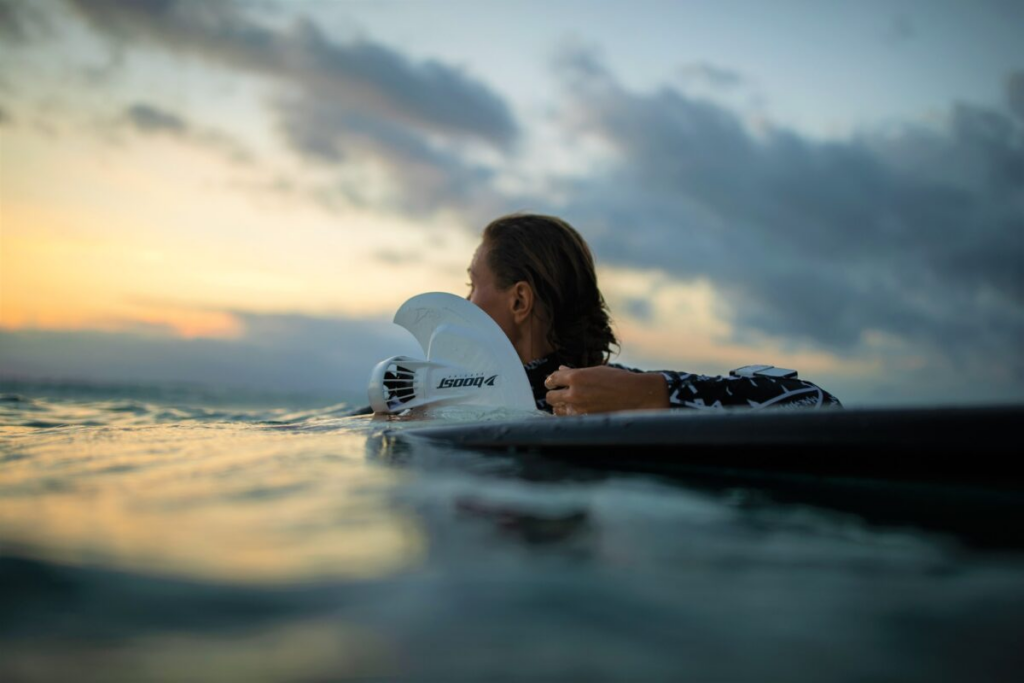
Si tienes lesiones en tablas de remo que afectan tu salud y tus habilidades para surfear, Aletas de refuerzo ¡Puede ayudarte! Las aletas Boost te permiten disfrutar de paseos más suaves, menos tensión, mejorar la estabilidad y aumentar la eficiencia, incluso si sufres lesiones, para redescubrir la alegría de remar.
Mejora tu juego de SUP y consigue el equipamiento adecuado con Boost Surfing ¡ahora!


Compartir:
Los 14 mejores regalos ideales para los amantes del paddleboard que los sorprenderán
Día Internacional del Surf: Historia y 11 actividades divertidas